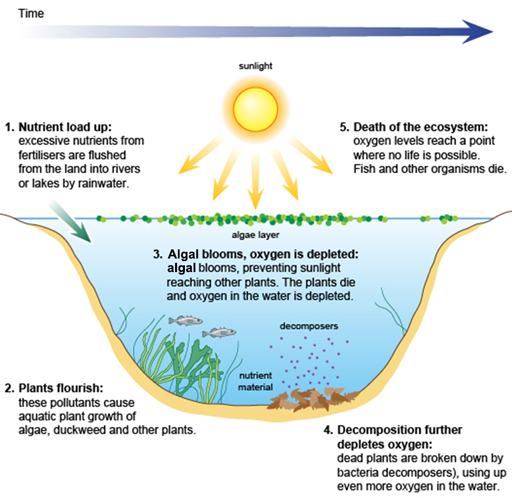4.2.4 Plant nutrients
Nitrates and phosphates are common pollutants generated from residential areas and agricultural run-off. They are usually associated with human and animal wastes or fertiliser that has been washed into surface water bodies by rain. Nitrates and phosphates are plant nutrients, so they stimulate plant growth. If present in large quantities, they can encourage excessive plant growth in the water causing the phenomenon known as an algal bloom, which means a sudden increase in the population of microscopic algae (simple plants). There may also be an increase in larger plants such as the invasive water hyacinth. When the increased population of aquatic plants dies, the decay of the organic plant material by bacteria can cause deoxygenation of the water, resulting in the death of other organisms such as fish. If a water body has high nutrient levels it is said to be eutrophic and the process is known as eutrophication. Figure 4.3 illustrates the process.
Can you think of a reason why eutrophication is more likely to be a problem in lakes than in rivers?
Because flowing water in a river will disperse the nutrients; in the still water of a lake, the nutrients will accumulate.
In Ethiopia, many private and corporate farms use huge amounts of chemical fertilisers. As a result, eutrophication is becoming a major problem (Zinabu et al., 2002), affecting many water sources (Figure 4.4).

4.2.3 Biological pollutants

